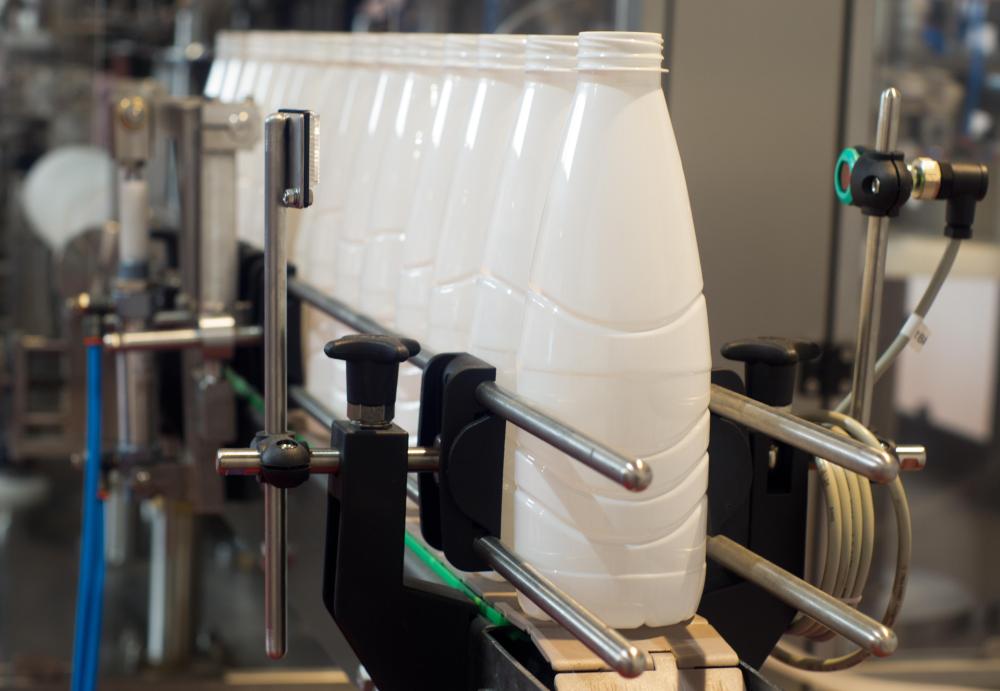At TheHealthBoard, we're committed to delivering accurate, trustworthy information. Our expert-authored content is rigorously fact-checked and sourced from credible authorities. Discover how we uphold the highest standards in providing you with reliable knowledge.
What is Pasteurization?
In 1864, a French man named Louis Pasteur discovered that liquids such as milk could be heated to a temperature slightly below boiling and held there for a set amount of time to eliminate the most harmful bacteria. The process of pasteurization is named after Louis Pasteur in recognition of his immense contribution to food safety and disease theory. Grocery stores carry a wide array of pasteurized goods including milk, juices, non-dairy milks, and other similar food products. Many nations require that foods be pasteurized for safety.
Pasteurization relies on the principle that most harmful bacterial can be killed by heat. The most effective way to kill bacteria is boiling, but this compromises the flavor of the liquid. Pasteurization strikes a happy medium, keeping the flavor delicious while making the food safer. In addition to minimizing the risk of sickness, pasteurization also makes foods more shelf stable and less likely to rot, meaning that fresh dairy products and juices are available to more people.

There are two primary methods of pasteurization: the liquid can be heated to 145 degrees Fahrenheit (63 degrees Celsius) and held there for at least thirty minutes, or the liquid can be flash pasteurized at 161 degrees Fahrenheit (72 degrees Celsius) for a minimum of 16 seconds. Pasteurization can be done using a continuous method, where the liquid flows through a pasteurization system, or by using a batch method, where one batch of the liquid is pasteurized at a time. Continuous pasteurization is popular for large producers, because it does not slow the supply line as much as batch pasteurization does.

Pasteurization must be performed on clean equipment. If bacteria is introduced after the liquid has been pasteurized, it can colonize it and potentially cause an outbreak of food borne illness. For this reason, companies which perform pasteurization are subject to frequent inspections to ensure that the equipment they are using is safe, and that the liquids they are pasteurizing are being handled correctly.

After pasteurization, bacteria can still appear. It is important that foods be safely handled and stored at every step of the supply process from animal, fruit or vegetable to stomach. In most cases, after food is pasteurized it should be refrigerated. The food is held in refrigeration until it is shipped out in cooled trucks to grocery stores, which store the food under refrigeration until consumers purchase it. Home consumers are responsible for following directives regarding temperature to ensure that the foods they are consuming are safe.
AS FEATURED ON:
AS FEATURED ON:
















Discussion Comments
Are you lactose intolerant? Have you tried pasteurized milk? In my humble opinion, past pasteurization seems different than the current pasteurization. Everyone is now lactose intolerant. Even your pets are now lactose intolerant. Maybe we just all need real pasteurized milk and natural foods.
Pasteurization is an unnecessary process for milk production that is done locally in clean and healthy (cow friendly) environments. That means milk factories, the large commercialized milk producers, must use pasteurization in order to kill all the junk (bacteria, feces, etc.) that gets into the milk because their facilities are not clean enough nor healthy to the cows to achieve a good milk product that is natural and not pasteurized.
On the other hand, small, local dairies that are not milk factories produce raw milk, milk that is not pasteurized nor homogenized because their facilities are clean. Raw milk is milk that retains all the good properties it was designed to. The proof in the goodness of raw milk can be easily seen with those who are lactose intolerant. These persons can most often consume raw milk without any problems.
The pasteurization process does kill all the bad things that get into the milk but it also kills the good stuff and that's not so great.
A final thought on raw milk versus pasteurized milk. Why is it that all the milk/dairy recalls are from milk that has been pasteurized?
Louis pasteur did not name pasteurization after himself. other people did/
what is the basic procedure of pasteurization? I'm kind of confused.
I read a huge amount of material regarding pasteurization and i didn't find an explanation about the nutritional value of products after this process. Can somebody clarify this issue? Thanks.
Is pasteurization the same as a steam system?
Great! Continue to post some educational references!
why did louis pasteur want to name pasteurzation after him, apart from he invented it? because does he get a lot of money or does he just want to be known?
Plz. tell me microbiology method of starch industry test.
Procedure of food industry.
Yeast, Mold, Bacteria, E.Coli, Salmonella, Enterobacter,
Test TBC, SPC, MPN, Swab, Gram Staining, Pure culture, and
other microbiology tests.
Post your comments